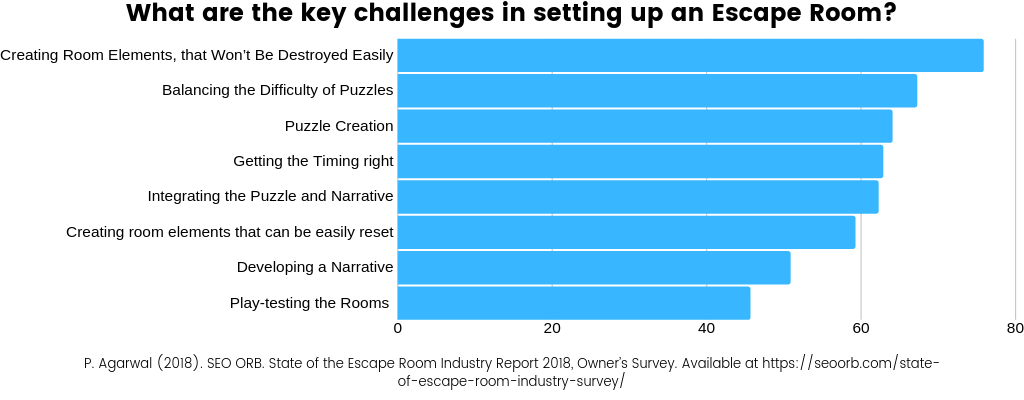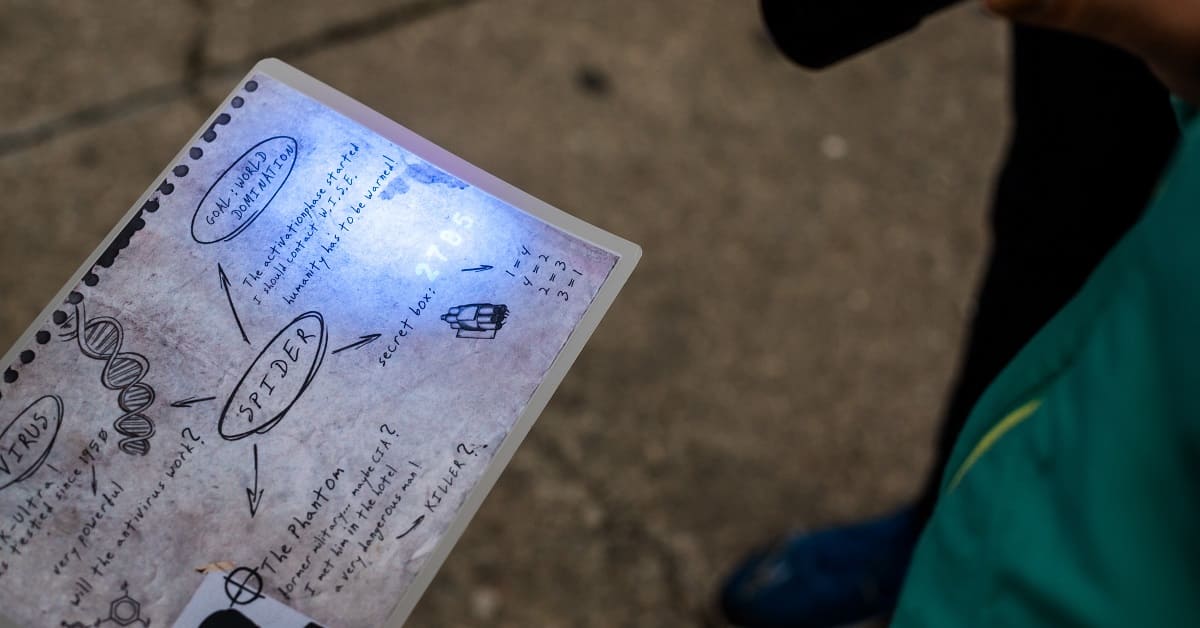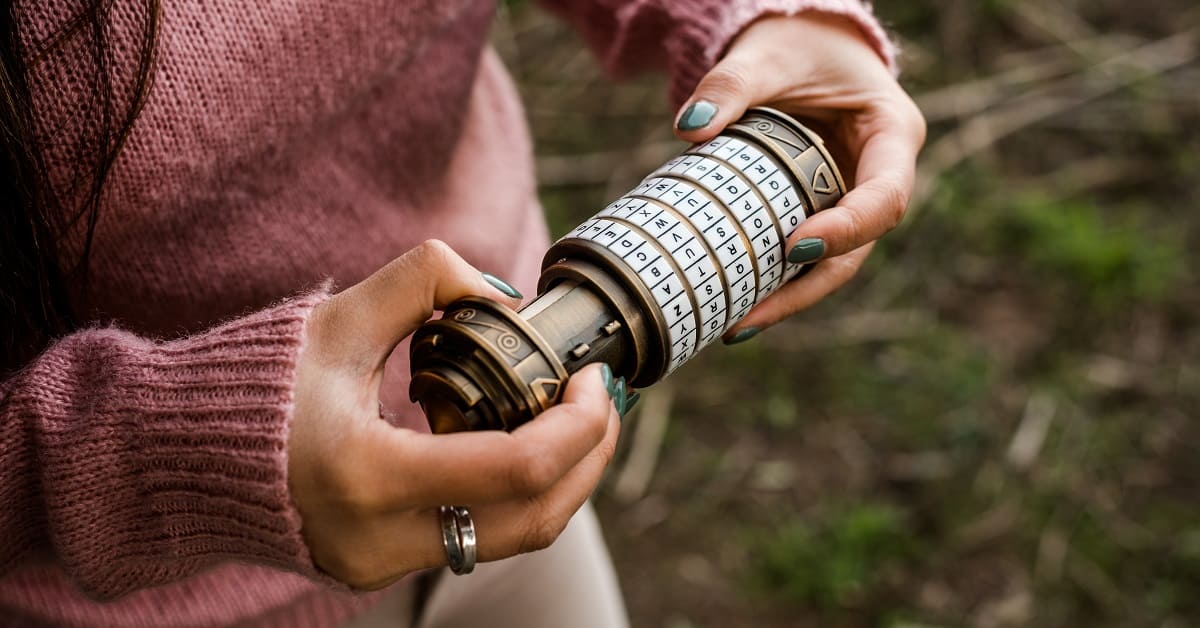Whether they be independent ideas or straight off-the-rack, unique Escape Room puzzles are a deciding factor for the success of your business. Are you seeking inspiration? We have compiled a list of ideas, sectioned into 7 different categories.
What you can expect to read in this article:
- The different types of Escape Room puzzles
- How each puzzle can challenge each of your senses
- Standing out from the crowd with unusual puzzles
- Using soundtracks and certain perspectives to create unique Escape Room puzzles
- The attraction of interactive puzzles
Buying or developing your own ideas?
Buying premade Escape Room puzzles saves a lot of time, because it’s much faster to access existing ideas and have them built in by professionals than to come up with them yourself. However, the fun and individuality of your Escape Room can be lost in the process. Perhaps a competitor in your region has already bought the same puzzle?
If you are avid Escape Room players yourself, creating and developing Escape Room puzzles is probably one of your favourite pastimes. Bookkeeping, personnel administration and your audience are, of course, also part of it. However, time for creating a unique-yet-professional game must be put aside.
By creating your own Escape Room puzzles, you will stand out from the competition. However, you must also accept that the journey from the initial idea to implementation is a bit longer. Remember, once you have developed your idea, you need to test and build it, too.

1. The Sound of Music
Some puzzle types are absolute essentials and can be found in every Escape Room. Therefore, we want to focus on something a bit more unusual – the soundtrack of your puzzle.
Birds croaking, Frogs roaring, Lions chirping?! Something does not add up here! Only if your players listen carefully, they will realise that the sounds are part of your Escape Room puzzles. As music and other sounds often run in the background, it is easy to ignore them. The fact that they are actually part of a puzzle only becomes clear, when the players listen carefully. This is what makes them so exciting and extraordinary – players have to use another sense to escape from your room.
Sounds can also be used to implement great Escape Room puzzle ideas for children. It can be about assigning different sounds to animals, or to recognise messages in well-known children’s film songs. There are no limits to your creativity, but the puzzles should always fit the setting of your Escape Room.
2. It All Depends on the Perspective
Everything in life is relative. Some situations are good or bad, depending on how you view it. This very philosophy can be applied to your Escape Room puzzles – the correct answer all depends on which perspective the players look at something. Sometimes objects from a distance look very different from what they look from up-close. You can take advantage of this effect.
Paint cryptic symbols on walls and furniture that look like they do not make sense. But when players stand at a certain point in the room, they will recognise the code. For example, numbers, letters, or shapes become visible when your players find a certain pair of glasses. The glasses would then decode the markings to reveal a clue, which the players need to solve a puzzle.
3. It Must Be Here Somewhere!
Hidden objects are a standard puzzle in Escape Rooms. They are used in almost every challenge. Often keys are hidden – in decorative objects, under desks or behind windows. A good example for a puzzle would be to place a row of books on a shelf. One of the books is hollow on the inside, and thus, offers space for a hiding place. You can then place the key to a padlock or other Escape Room puzzle items inside.
Another variation of this classic puzzle is to place a crate with a trap door inside. The players will find something when they open the crate, but by digging a bit further, they will discover the item they really need.
Of course, you can also hide other items for Escape Room puzzles. Players may have to assemble a file with different letters circled in it, but the snippets are scattered throughout the room. Perhaps players may be looking for the pieces of a map where they need to decipher something. The possibilities with hidden object puzzles are almost endless.
4. The Writing Is on the Wall… Or Is It?
Mirror, mirror on the wall, who is the most clueless of them all?
You can build mirrors into your Escape Room puzzles in many ways. With a mirror, players can read text backwards, direct beams of light to specific locations to trigger effects and turn cryptic hieroglyphics into decipherable messages. The characters can also be in another room, separated by bars, upon which the players have to take the mirror in their hand and stretch their arm through the grid to decipher them.
But in the same way messages can be hidden on the mirror, you can inscribe mirrors with soap. The writing is only visible when players breathe on the mirror. Alternatively, a backlight can be used to make a message appear on the mirror. The players have to activate the light before by solving a different puzzle.
5. Let There Be Light!
In the suggestion above, we mentioned light as part of Escape Room puzzles. You can use it in very different, yet creative, ways in your Escape Rooms. Often UV-light is used to make the invisible visible at first. A sequence of lights, however, which results in a Morse code-like pattern, or lights up in different colours are great ideas for clues.

6. Teamwork Makes the Dream Work
You can see a key, but you do not have a clue on how to reach it? Perhaps there is a way to reach it from another room. Then teamwork is needed here. One player tries to get the key without being able to see it, while the other tells them what to do. Or you chain two players together and they have to find a key first before they can move independently again.
Escape Room puzzles of this kind are especially interactive, because they can really only be solved if the players work together. Celebrating successes together bonds them together. This is why more and more companies are booking Escape Rooms as a team-building measure.
However, not every Escape Room operator has enough rooms to accept bookings from large groups. If this problem seems familiar to you, an Outdoor Escape Game might be the solution for your problem. With Cluetivity games like Operation Mindfall and Magic Portal, you can send hundreds of players on exciting missions at the same time.
7. Something “Obvious” Is Easily Overlooked
Sometimes players are so focused on looking for codes and hidden crevices that they no longer notice the obvious. This gives you the opportunity to surprise them. Avoid trying to disguise all the clues, but quietly place some tips right in front of the players’ noses.
A few footprints in the ground are pretty obvious. For example, you can open a secret door or activate a light that illuminates clues. In the same way, a mechanism in a sofa cushion can be built in to trigger an effect. Perhaps a rather conspicuous carpet could have a passage to a secret area built underneath it!
We hope our suggestions have inspired you to create some original ideas for your Escape Rooms. Is there something that we perhaps left out? Feel free to drop us a comment!
Are you in a company and looking for a fun remote training for teams? Check out our new platform for virtual team building events.
